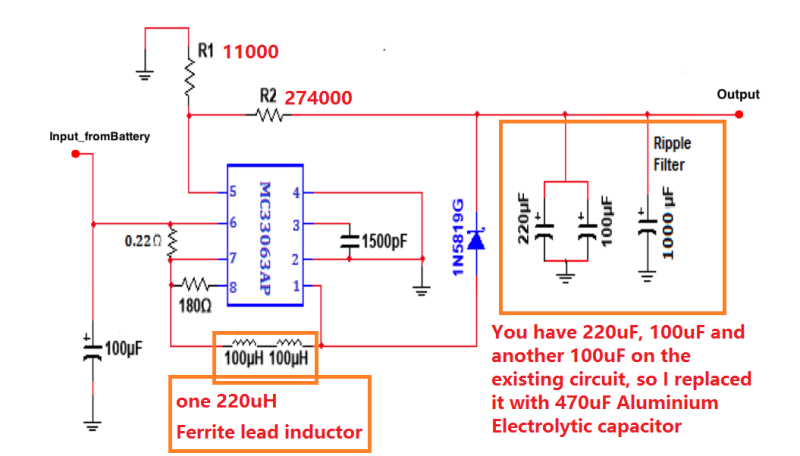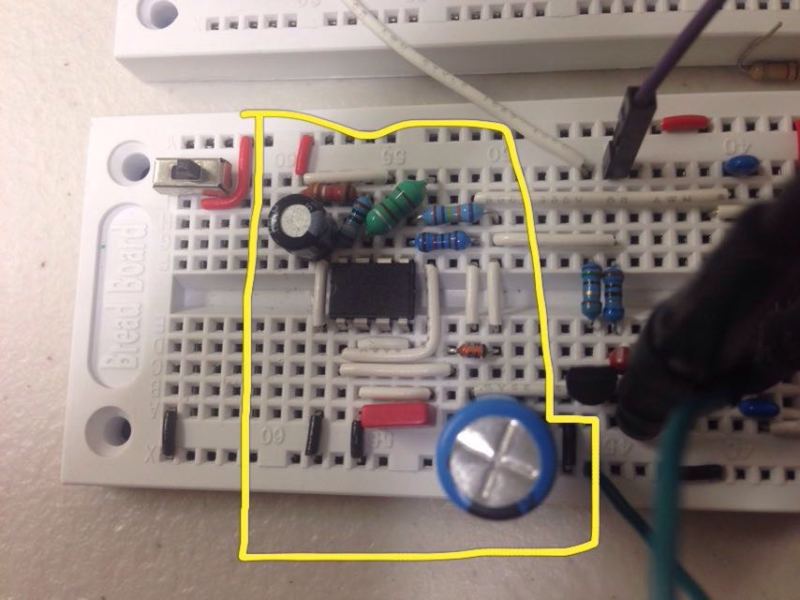Joe Wu
Electrical
- Feb 8, 2017
- 5
Hi, I have recently built a dc-dc converter to convert supply voltage from 6V to 32V, the circuit diagram is as below:

and the circuit on the breadboard is looks like this:

My friend has built one with the same circuit diagram, I have double checked with him, both circuit connects exactly the same with same components, he circuit is working perfectly fine, but my circuit has a problem. my output voltage jump to the 42V, slowly drops to 32V, jump up again to 42V, slowly drops and it repeats this process over and over again. I have no idea what is wrong with it.
Here is how my friend circuit looks like:

Any help will be appreciate!
Thank you!

and the circuit on the breadboard is looks like this:

My friend has built one with the same circuit diagram, I have double checked with him, both circuit connects exactly the same with same components, he circuit is working perfectly fine, but my circuit has a problem. my output voltage jump to the 42V, slowly drops to 32V, jump up again to 42V, slowly drops and it repeats this process over and over again. I have no idea what is wrong with it.
Here is how my friend circuit looks like:

Any help will be appreciate!
Thank you!
